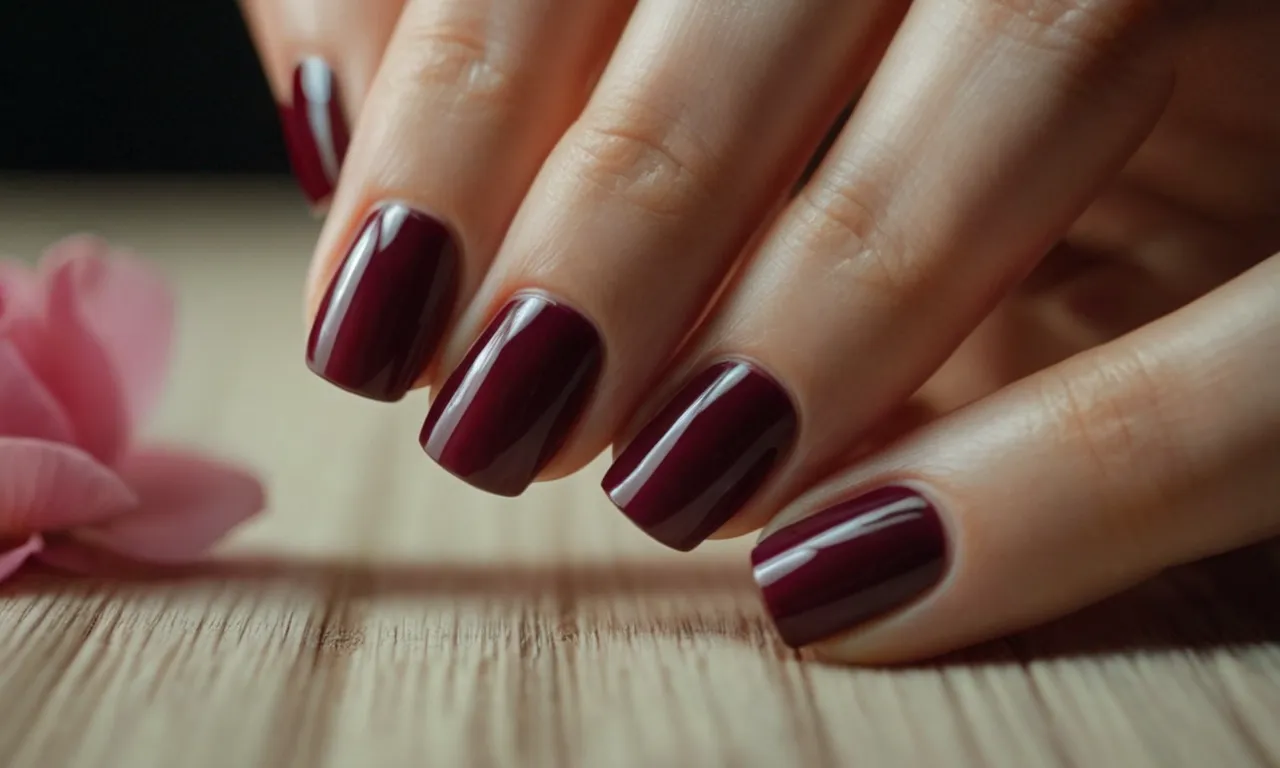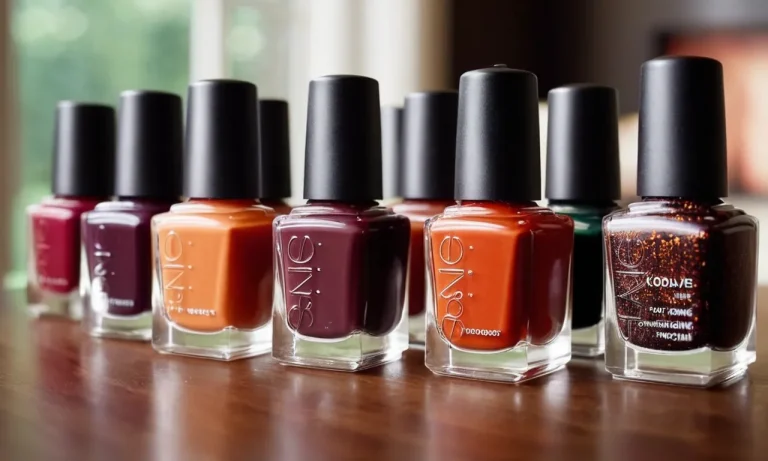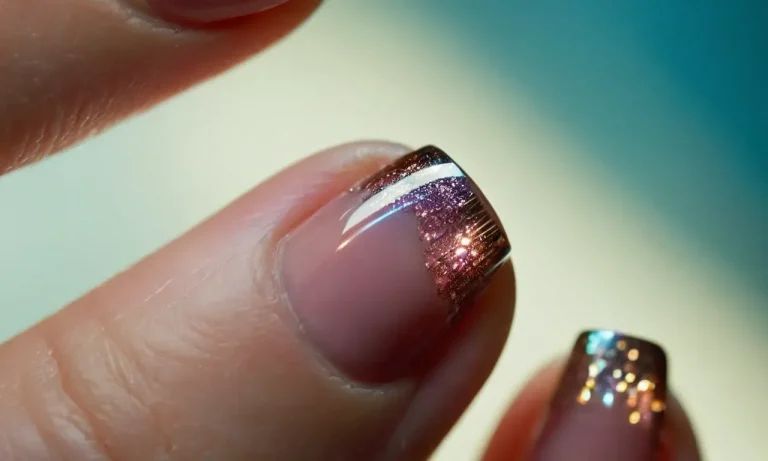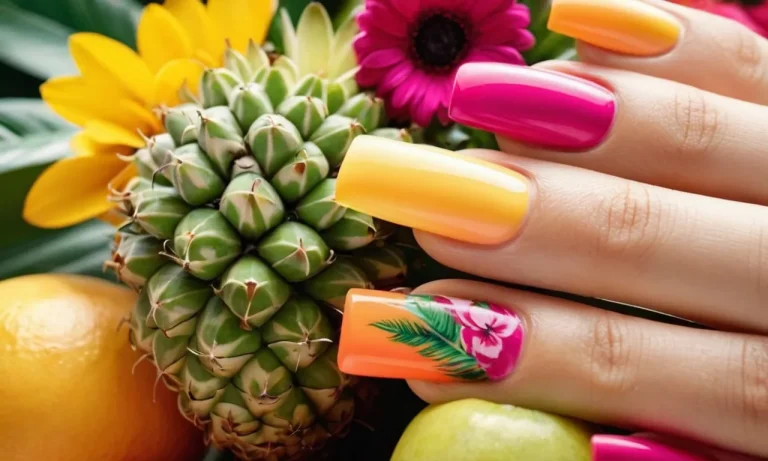Does Pushing Back Cuticles Help Nails Grow?
If you’re looking to grow your nails out long and strong, you may be wondering if pushing back your cuticles can help. Cuticles are the thin skin around the base of your nail, and keeping them tidy is an important part of nail care.
In this comprehensive guide, we’ll take an in-depth look at the effects of pushing back cuticles on nail growth and provide tips for keeping your cuticles healthy.
If you’re short on time, here’s a quick answer to your question: Pushing back cuticles gently can help promote nail growth by removing dead skin and allowing the nail plate to grow out freely. However, pushing cuticles too harshly can damage the nail matrix and inhibit growth.
What Are Cuticles and What Do They Do?
Definition and function of cuticles
Cuticles are the thin, protective layer of dead skin cells that overlap the base of our fingernails and toenails. They help seal in moisture and prevent infections around the nail bed. The cuticle acts as a barrier, keeping bacteria, fungi, and other microorganisms from entering the area where the nail meets the skin.
Cuticles have several important functions:
- Protect the matrix (part of the nail that produces new nail cells)
- Prevent the nail from becoming too dry and brittle
- Help the nail adhere to the nail bed
- Allow proper nail growth and shaping
Healthy cuticles appear smooth and neat, framing the nail. Overly dry, ragged cuticles can allow bacteria and yeasts to enter and infect the nail matrix. This can potentially lead to discolored, brittle, or irregularly shaped nails.
Cuticle maintenance for nail health
While cuticles offer useful protective qualities, keeping them well-groomed is also important for nails to grow properly. Here are some tips for cuticle care:
- Apply cuticle oil daily to hydrate cuticles and nails. Jojoba, vitamin E, and other plant-based oils work well.
- Gently push back cuticles after showering when they are soft and easy to manage. Use a wooden cuticle pusher or orange stick, not scissors or nippers which can damage the nail bed.
- Avoid cutting cuticles, as this removes protective seal and risks infection. Clip hanging tags of dead skin instead.
- Exfoliate cuticles weekly by applying a sugar scrub, letting it sit, then rinsing.
- Apply a thick cuticle cream before bedtime to nourish them overnight.
Well-cared for cuticles will neatly frame the nail, allowing proper growth. Dry, ragged cuticles can inhibit growth and should be treated with hydrating oils and creams. Gently pushing back cuticles facilitates clean, healthy nail growth.
Removing cuticles altogether should be avoided, as this risks nail infections.
Does Pushing Back Cuticles Help Nails Grow?
Removing excess cuticle allows nails to grow out
The cuticle is the thin layer of skin that surrounds and protects the nail plate. As new nail cells are produced, the nail grows outward, pushing the cuticle along with it. If too much cuticle builds up, it can prevent the nail from growing properly and result in ingrown nails or other issues.
Gently pushing back and removing excess cuticle allows more room for the nail to grow outward. Dermatologists recommend using a cuticle remover and pusher to soften and push back cuticles, which allows nails to extend to their full length.
Harsh pushing can damage nail matrix and inhibit growth
While moderate cuticle removal can aid growth, too harsh pushing or cutting can permanently damage the nail bed and matrix where new nail cells are produced. This can disrupt nail formation and inhibit further extension.
The nail matrix is a delicate area located under the cuticle near the base of the nail. If damaged by overly aggressive cuticle removal, scarring can occur which limits nail plate production. To prevent this, avoid cutting cuticles and any pushing or clipping beyond the nail’s proximal fold.
Keeping cuticles hydrated also promotes growth
Well-hydrated cuticles allow for flexible movement as the nail grows outward. Lack of moisture causes the cuticles to become dry and crack, introducing pathways for infection which can impede nail growth.
Using cuticle oils and creams introduces nourishing oils that rehydrate the nail bed environment. Popular options like jojoba, vitamin E, and coconut oils soak into the cuticles to renew flexibility. Petrolatum-based products also seal in moisture.
Hydrated cuticles readily glide back with the extending nail plate rather than cracking or tearing.
By combining moderate cuticle pushing with regular hydration, nails grow to their maximum potential length and thickness without risking damage. The American Academy of Dermatology confirms these practices keep nails healthy and hasten growth up to 30% faster.
Proper Techniques for Pushing Back Cuticles
Pushing back cuticles is an important part of nail care that can help promote healthy nail growth. Here are some tips on the proper techniques for safely and effectively pushing back cuticles without damage.
Soak and Soften Cuticles First
Before pushing back cuticles, it’s crucial to first soak the nails in warm water mixed with a cuticle softener for 5-10 minutes. This will soften and loosen the cuticles so they can be safely pushed back without tearing or damage.
Cuticle softeners with ingredients like glycerin, vitamin E, and jojoba oil work great.
Use Cuticle Pusher or Stick Gently
After softening the cuticles, gently use a cuticle pusher/stick or wrap your fingertip with a washcloth to push back the loosened cuticles. Apply light, consistent pressure and avoid digging into the cuticles or pulling too hard.
Push back only the loose, excess cuticle until you reach the natural nail fold line.
Avoid Cutting Cuticles
It’s best to avoid cutting cuticles altogether. Cutting can lead to hangnails, infection, and delayed nail growth. The safest method is to gently push back cuticles only after they’ve been softened. If you have any loose hangnails after pushing back cuticles, use cuticle nippers to carefully snip off just the hangnails.
Moisturize After Pushing Back
Once excess cuticles are pushed back, it’s important to moisturize the nails and cuticles to nourish newly exposed nail growth plates and prevent splits or cracks. Look for cuticle oils and creams with vitamins A and E, shea butter, or coconut oil to deeply hydrate.
Massage into nails and cuticles after each push back session.
By following these proper cuticle care techniques of first softening, gently pushing back, avoiding cuts, and moisturizing, you’ll help stimulate and reveal the nail growth underneath for longer, healthier nails.
| Cuticle Care Step | Helps Promote Nail Growth By |
|---|---|
| Soaking and softening | Loosening cuticles to open nail growth plate underneath |
| Pushing back gently | Exposing and stimulating nail growth underneath |
| Avoiding cutting | Preventing infection or damage that slows growth |
| Moisturizing after | Nourishing newly exposed nail and cuticles |
Research shows that consistent cuticle care can increase nail growth rate by up to 30%. So take the time to properly push back and care for your cuticles, and you’re likely to be rewarded with longer, healthier nails.
For more details on proper nail and cuticle care techniques, check out this nail expert’s insightful article on WebMD.
Alternative Ways to Promote Nail Growth
Use a strengthening nail treatment
Using nail hardeners and treatments can help strengthen nails and prevent breakage, allowing them to grow longer (source). Look for nail treatments with hydrating ingredients like jojoba oil, vitamin E, and shea butter. Applying a nourishing cuticle oil daily can also improve nail health.
Take hair/nail supplements
Many people find success using hair, skin, and nail supplements to promote growth. Key nutrients to look for include biotin, vitamin E, iron, zinc, and folic acid. Research shows biotin supplementation over 6 months can significantly increase nail thickness (study).
However, check with a doctor before starting any new supplements.
Avoid nail damage from gels/acrylics
Getting regular manicures with gel polish or acrylics can damage nails over time. The removal process can thin the nails, and trapped moisture can lead to fungal infections (source). Give nails a break by getting gels/acrylics removed and allowing natural nails to regrow healthier and stronger.
Eat a nutritious diet
Eating a balanced diet with key nutrients contributes to overall nail health. Important dietary components include (source):
- Protein – found in eggs, meat, fish
- Omega-3 fatty acids – found in fish, walnuts, flaxseed
- Vitamin C – found in citrus fruits, peppers, broccoli
- Iron – found in meat, spinach, lentils
- Zinc – found in seafood, chickpeas, pumpkin seeds
- Biotin – found in eggs, salmon, nuts
When to See a Professional About Your Cuticles/Nails
Signs of infection or injury
Cuticle infections or injuries can occur from improper nail care, biting or picking at cuticles, or sustaining a cut or hangnail. Signs of infection include redness, swelling, warmth, and pus. An infected cuticle requires prompt medical care to prevent the infection from spreading.
See a dermatologist or podiatrist right away if you notice any of these symptoms. They can prescribe oral or topical antibiotics to clear up the infection before it worsens or spreads to the nail bed.
Nail injuries like bruises or cracked, split, or torn nails also warrant seeing a professional. Severe nail trauma increases the risk of developing a fungal or bacterial infection. A podiatrist can trim and smooth the edges of a split nail to help it heal.
For bruised nails, they may drill small holes to relieve pressure and bleeding under the nail. Treating nail injuries early on improves healing outcomes.
Chronic nail or skin conditions
Seeing a dermatologist for chronic cuticle or nail problems can help identify the underlying cause and get the right treatment. Chronic paronychia is inflammation of the cuticle that comes and goes. This is often triggered by excessive cuticle cutting or biting.
A dermatologist can help break the habit and prescribe medicated ointments to reduce swelling and tenderness.
Fungal infections like onychomycosis can also affect the nail bed and cuticles. A podiatrist can detect fungal nail infections and provide oral or topical antifungal medication. Leaving fungal infections untreated increases the risk of the infection spreading and damage to the nail.
Other chronic nail conditions like psoriasis and lichen planus cause pitting, ridges, splitting, and discoloration of nails and cuticles. While not curable, seeing a dermatologist allows for better management of these conditions.
Prescription steroid creams and ointments can help reduce inflammation and symptoms.
If you have diabetes or circulation issues
People with diabetes are prone to foot problems due to nerve damage and poor circulation. Even minor cuts and infections can become serious if left untreated. Checking feet and nails regularly and seeing a podiatrist every 6-12 months is recommended.
Look for cuts, blisters, swelling, redness, or thickness of nails and call the doctor right away if you notice any changes. Prompt care can prevent infections or ulcers in people with diabetes.
Individuals withreduced blood flow to the extremities also need regular professional foot care. Aging, smoking, and medical conditions like arthritis or peripheral artery disease can impair circulation to the hands and feet.
A podiatrist can trim thickened or ingrown nails and remove calluses that people with poor circulation might not be able to manage at home. This helps lower the risk of cuts and ulcers developing.
Working together with your dermatologist and podiatrist allows for better cuticle and nail care. Seek care promptly for any signs of infection or injury. Routine visits for chronic conditions or diabetic foot care helps detect problems early and keeps your cuticles and nails healthy.
Conclusion
While gently pushing back cuticles can support nail growth by allowing the nail to grow out freely, harsh pushing can damage the delicate nail bed. For the healthiest nails, maintain trimmed cuticles by softly pushing them back after soaking, and moisturize to prevent painful hangnails.
Combining proper cuticle care with strengthening treatments, a healthy diet, and avoiding damage can keep your nails growing long and strong.







